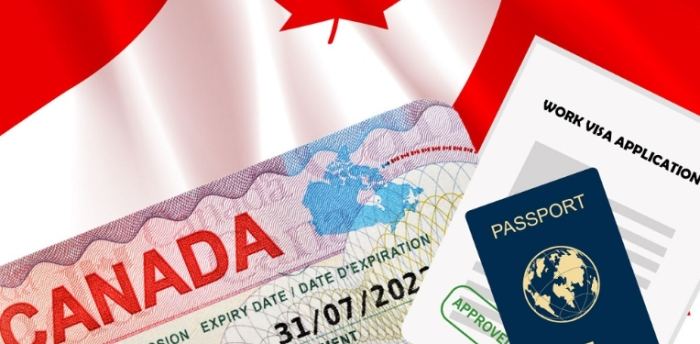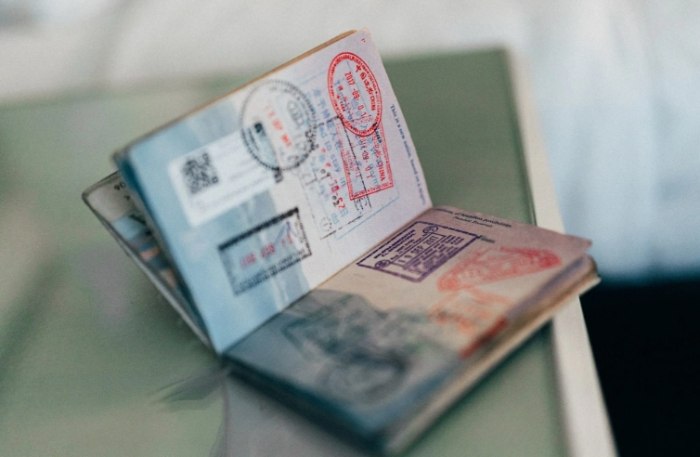Advertisements
Canada Work Visa Guide: Requirements, Application Steps, Costs & Job Search Tips
Need a Canada work visa? Learn the requirements, application steps, costs, and how to find jobs in Canada. Get all details on Canada work visa eligibility, processing fees, and job search tips for a smooth move!
Table of contents
Hey there, fellow adventurers! If you’re dreaming of working in the Great White North, you’re in the right place. Canada’s vibrant culture, stunning landscapes, and booming job market make it a top destination for professionals worldwide. But before you pack your bags, let’s dive into the nitty-gritty of securing a Canada work visa. I’ll walk you through everything from eligibility criteria to job-hunting strategies, ensuring you’re well-prepared for this exciting journey.
Requirements for Canada Work Visa
Alright, let’s kick things off with the most crucial part: understanding the requirements for a Canada work visa. Trust me, getting this right is half the battle won!
Eligibility Criteria
First up, eligibility. Not everyone can just up and apply for a Canada work visa. You need to meet specific criteria, which include:
- Job Offer: You must have a valid job offer from a Canadian employer. This isn’t just any job offer; it needs to be from an employer who’s willing to go through the process of obtaining a Labour Market Impact Assessment (LMIA) if required.
- Qualifications: Your skills, education, and work experience should match the job requirements. Canada is pretty strict about ensuring that foreign workers aren’t taking jobs away from locals unless there’s a genuine shortage.
- Health and Character: You’ll need to undergo a medical examination and provide a police clearance certificate to prove you’re in good health and have a clean criminal record.
Language Proficiency
Next up, language skills. Canada is a bilingual country, with English and French as its official languages. Depending on the job and the province, you might need to prove your proficiency in either or both languages. Typically, you’ll need to take a language test like IELTS (for English) or TEF (for French) and score a certain number of bands or points.
Financial Stability
Money talks, even when it comes to visas. You’ll need to show that you have enough funds to support yourself and any accompanying family members during your stay in Canada. This includes money for accommodation, food, transportation, and other daily expenses. The exact amount varies depending on the size of your family and the province you’re planning to live in.
Canada Work Visa Application
Alright, now that you know the requirements, let’s dive deeper into the Canada work visa application process. This is where the rubber meets the road, so pay close attention!
Choosing the Right Visa Type
First things first, you need to choose the right type of work visa for your situation. Canada offers several types of work permits, including:
- Temporary Foreign Worker Program (TFWP): This is for workers who have a job offer from a Canadian employer and need an LMIA.
- International Mobility Program (IMP): This is for workers who don’t need an LMIA, such as those coming under international agreements like NAFTA or those with significant benefit to Canada.
- Post-Graduation Work Permit (PGWP): This is for international students who have graduated from a Canadian educational institution and want to gain work experience in Canada.
Steps to Apply for a Canada Work Visa
Now, let’s talk about the steps involved in applying for a Canada work visa. Remember, the process can be a bit daunting, but if you follow these steps, you’ll be well on your way:
- Step 1: Get a Job Offer: As mentioned earlier, you need a valid job offer from a Canadian employer. This employer will likely need to obtain an LMIA, which proves that hiring a foreign worker won’t negatively impact the Canadian job market.
- Step 2: Gather Documents: Once you have your job offer, start gathering all the necessary documents. This includes your passport, educational certificates, work experience letters, language test results, medical examination report, and police clearance certificate.
- Step 3: Submit Your Application: Now, it’s time to submit your Canada work visa application. You can do this online through the Immigration, Refugees and Citizenship Canada (IRCC) website or by mail. Make sure you fill out the form accurately and attach all the required documents.
- Step 4: Pay the Fees: Don’t forget about the fees! The cost of a Canada work visa varies depending on the type of visa and the duration of your stay. Make sure you pay the correct amount to avoid any delays or rejections.
- Step 5: Wait for a Decision: After submitting your application, all you can do is wait. The processing time can vary, so be patient. You can check the status of your application online using the IRCC’s tracking tool.
Preparing Your Application
Once you’ve chosen the right visa type, it’s time to prepare your application. Here are some tips to make sure your application stands out:
- Be Thorough: Fill out every section of the application form accurately and completely. Don’t leave anything blank or guess at answers.
- Provide Supporting Documents: Attach all the required supporting documents, such as your job offer letter, educational certificates, and language test results. Make sure they’re all in the correct format and up to date.
- Write a Cover Letter: A well-written cover letter can make a big difference. Use it to explain your situation, why you want to work in Canada, and how you meet the requirements for the visa.
Submitting Your Application
Now, it’s time to submit your Canada work visa application. Here are some things to keep in mind:
- Submit Online or by Mail: You can submit your application online through the IRCC website or by mail. Online submissions are generally faster and more convenient, but make sure you have all the necessary documents scanned and ready to upload.
- Pay the Fees: Don’t forget to pay the fees! The cost of a Canada work visa can vary, so make sure you check the IRCC website for the latest information. You can pay the fees online using a credit card or by other accepted methods.
- Keep a Copy: After submitting your application, make sure you keep a copy of everything you sent, including the application form, supporting documents, and payment receipt. You might need these later if there are any issues with your application.
After Submission
Once you’ve submitted your application, all you can do is wait. But here are some things you can do to stay informed and prepared:
- Check the Status: Use the IRCC’s tracking tool to check the status of your application. You can also sign up for email notifications to get updates directly to your inbox.
- Prepare for an Interview: In some cases, you might be asked to attend an interview as part of the application process. Be prepared to answer questions about your background, job offer, and plans for working in Canada.
- Stay in Touch: If there are any changes to your situation, such as a new job offer or a change in your contact information, make sure you update the IRCC as soon as possible.

Costs of Canadian Work Permits
Alright, let’s talk money. The cost of a Canada work visa can vary depending on several factors, including the type of visa, the duration of your stay, and whether you’re applying online or by mail. Here’s a breakdown of the costs you can expect:
Application Fees
The main cost you’ll incur is the application fee. This is the fee you pay to submit your Canada work visa application. The amount varies depending on the type of visa and the duration of your stay. For example, the application fee for a Temporary Foreign Worker Program (TFWP) work permit is generally around CAD 155, while the fee for a Post-Graduation Work Permit (PGWP) is around CAD 255.
Biometrics Fees
In addition to the application fee, you might also need to pay biometrics fees. Biometrics include your fingerprints and a photo, and they’re required for most visa applicants. The biometrics fee is around CAD 85 per person.
Other Costs
There might be other costs associated with your Canada work visa application, such as:
- Medical Examination Fees: If you need to undergo a medical examination as part of your application, you’ll need to pay the fees for that. The cost varies depending on the clinic and the type of examination required.
- Police Clearance Certificate Fees: You’ll also need to pay for a police clearance certificate from your home country or any other country where you’ve lived for a significant period. The cost varies depending on the country and the issuing authority.
- Translation Fees: If any of your documents aren’t in English or French, you’ll need to have them translated by a certified translator. The cost of translation varies depending on the length and complexity of the document.
Tips for Managing Costs
The cost of a Canada work visa can add up quickly, but here are some tips to help you manage your expenses:
- Plan Ahead: Start saving money well in advance of your application. This will give you enough time to cover all the costs without feeling overwhelmed.
- Compare Prices: When it comes to things like medical examinations and translations, shop around and compare prices. You might be able to find a better deal if you’re willing to do a bit of research.
- Look for Discounts: Sometimes, the IRCC or other organizations offer discounts or fee waivers for certain applicants. Keep an eye out for these opportunities and take advantage of them if you qualify.

How to Find a Job in Canada
Alright, now that you know all about the requirements, application process, and costs of a Canada work visa, let’s talk about the most exciting part: finding a job in Canada! Here are some tips to help you land your dream job:
Networking
Networking is key when it comes to finding a job in Canada. Here are some ways to get started:
- Join Professional Associations: Look for professional associations related to your field and join them. This will give you access to industry events, job postings, and networking opportunities.
- Attend Job Fairs: Keep an eye out for job fairs in your area or online. These events are a great way to meet potential employers and learn about job openings.
- Connect on LinkedIn: LinkedIn is a powerful tool for networking. Make sure your profile is up to date and start connecting with professionals in your field. You can also join LinkedIn groups related to your industry to stay informed and engage in discussions.
Online Job Search
In addition to networking, you’ll also want to search for jobs online. Here are some popular job search websites in Canada:
- Indeed: Indeed is one of the most popular job search websites in Canada. You can search for jobs by location, industry, and job title.
- LinkedIn Jobs: LinkedIn also has a job search feature where you can find job postings from companies all over Canada.
- Government Job Banks: The Canadian government operates several job banks where you can find job postings from federal, provincial, and municipal governments. These can be a great source of jobs, especially in sectors like healthcare, education, and public administration.
Tailoring Your Resume and Cover Letter
When applying for jobs in Canada, it’s important to tailor your resume and cover letter to the specific job and company. Here are some tips:
- Research the Company: Before applying, research the company to learn about its culture, values, and mission. Use this information to customize your resume and cover letter to show how you’re a good fit for the company.
- Highlight Relevant Skills and Experience: Make sure your resume and cover letter highlight your most relevant skills and experience for the job. Use keywords from the job posting to make sure your application stands out.
- Keep It Concise: Canadian employers prefer concise resumes and cover letters. Keep your resume to one or two pages and your cover letter to one page or less.
Preparing for Interviews
If you’re lucky enough to land an interview, here are some tips to help you prepare:
- Research the Company: Again, research the company to learn about its products, services, and recent news. This will help you answer questions about why you want to work for the company and what you know about it.
- Practice Common Interview Questions: There are certain questions that come up in almost every interview, such as “Tell me about yourself” and “What are your strengths and weaknesses?” Practice answering these questions so you’re prepared.
- Dress Professionally: First impressions matter, so dress professionally for your interview. Even if the company has a casual dress code, it’s better to err on the side of caution and dress up.

Q&A Section
Alright, let’s wrap things up with a Q&A section. Here are some common questions people have about Canada work visas:
Is it difficult to get a work visa in Canada?
Getting a work visa in Canada can be challenging, but it’s definitely not impossible. The key is to meet the requirements, prepare a strong application, and be patient. Remember, the process can take time, so start early and stay organized.
Can Hong Kong citizens work in Canada?
Yes, Hong Kong citizens can work in Canada, but they’ll need to obtain a valid work visa first. The process is the same as for citizens of other countries, so make sure you meet the requirements and follow the application steps carefully.
Canada work permit after graduation
If you’re an international student who’s graduated from a Canadian educational institution, you might be eligible for a Post-Graduation Work Permit (PGWP). This allows you to stay in Canada and work for up to three years, depending on the length of your study program. Make sure you check the IRCC website for the latest information on PGWP eligibility and application requirements.
Types of Canadian work permits
As mentioned earlier, Canada offers several types of work permits, including the Temporary Foreign Worker Program (TFWP), International Mobility Program (IMP), and Post-Graduation Work Permit (PGWP). Each type has its own eligibility criteria and application process, so make sure you choose the right one for your situation.
Leave a Message